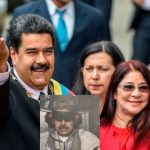
The 21st edition of the Malabar exercises, Malabar-17, was conducted in the Bay of Bengal from July 10 to 17, 2017. The primary aim of the exercise was to increase interoperability amongst the navies of India, Japan and the US as well as develop a common understanding and procedures for maritime security operations. The exercise is a demonstration of the joint commitment of all three nations to address common maritime challenges across the spectrum of operations and will go a long way in enhancing maritime security in the Indo-Pacific region for the benefit of the global maritime community.
The Indo-Pacific region holds immense geo-political and geo-strategic significance for navies around the world. The challenges of piracy, maritime terrorism, organised crime like drug trafficking, weapons smuggling, trafficking of weapons of mass destruction (WMD) and related material, all have forced navies to conduct joint patrols and provide escort duties for shipping assets. In conjunction with these non-conventional challenges, the challenge to freedom of navigation in the South China Sea, unrelenting firing of missiles by North Korea and apprehension of non-accessibility of crucial choke points have elicited varying responses from the stake holders. It has become imperative for navies to cooperate with each other, ensure interoperability and position maritime assets to ensure peace and stability. Over a period of time, naval exercises between like-minded nations have become a viable mechanism to practice drills in a simulated setting in order to eliminate functional gaps that may lead to insecurities.
Historically, naval exercises have enhanced interoperability between navies and facilitated the dissemination of best practices in the maritime realm. Such exercises have also resulted in better training, improved readiness, and evolution of standard operating procedures (SOPs) as well as facilitated joint operations and increased the trust quotient among participating sides. The employment of hi-tech equipment in these exercises not only helps show-case superior technology, whose efficacy is keenly watched, but also leads to subsequent procurement deals thereby further boosting inter-operability and integration. The Poseidon Eight India (P8I) long range maritime patrol aircraft procured by India from the US is a pertinent example in this regard.
Though the Indian Navy has been carrying out exercises with Sri Lanka (SLINEX), Singapore (SIMBEX), France (VARUNA), Australia (AUSINDEX), United Kingdom (KONKAN), and South Africa and Brazil (ISAMBAR),to name a few, the Malabar exercise has always generated a higher level of interest and attention, especially amongst stake holders in this region.
Naval exercises between India and the US (Malabar) has been an ongoing affair since 1992. After a brief interlude due to India’s 1998 nuclear tests and the imposition of sanctions, the exercise became an annual feature since 2002. Initially pitched at a basic level of naval drills between the US and India, Malabar 2005 involved the participation of the aircraft carriers of both navies for the first time. In Malabar 2006, a complete US expeditionary strike group and Coast Guard ships of both navies participated in anti-piracy drills, pollution control, search and rescue, visit, board, search and seizure (VBSS) techniques, all of which were in consonance with the prevailing and perceived maritime threats.
In June 2007, days before the first-ever official-level security consultation between the US, India, Japan and Australia, China issued démarches to each of the participants seeking to know the purpose behind their meeting. Not wishing to send a signal of creating a common platform against China, no further multi-lateral Malabar exercises were conducted after 2007, in which Japan, Australia and Singapore also participated along with India and US. The Chinese reaction revealed the degree of suspicion with which it had started viewing such naval exercises. From 2009 onwards, all Malabar exercises have increased in complexity to include surface and anti-submarine warfare, coordinated gunnery exercises, air defence, employment of aircraft and submarines, VBSS drills and other high-end manoeuvres for exigencies likely to be encountered at sea. The sea-phase of the exercises has been conducted almost alternately in the Indian and Pacific Oceans since 2009, and Japan has been participating in these exercises whenever they were conducted in the waters of the Pacific Ocean in its vicinity.
In 2015, India took the bold move of including Japan as a permanent member of the Malabar exercises. This was significant because the same move had earlier triggered an outcry from China in 2007 when the exercises were expanded from the bilateral format. The change proclaimed India’s readiness to stand its ground on security matters and was welcomed both by the US and Japan. This also brought the navies of India and Japan closer to each other in terms of interoperability and created a better understanding of each other’s capabilities. It complemented the special strategic partnership shared by the two countries and underlined the will of the Indian government to create stronger capabilities in conjunction with Japan to deal with maritime challenges in the Indo-Pacific region.
In January 2017, Australia requested that its naval assets be allowed to attend Malabar exercises as an ‘observer’. This was reiterated by the Australian Defence Minister Marise Payne during her visit to Tokyo in April 2017, when she said that Australia was ‘very interested in a quadrilateral engagement with India, Japan and the United States’. Though Australia was denied an observer status in Malabar-2017, participation of the country in future Malabar exercises has not been foreclosed. The Chinese media has welcomed India’s decision to reject Australia’s request. India’s decision, however, seems to be motivated more out of the need to improve naval engagement at the bilateral level and look at multilateral exercises involving Australia, India, US and Japan at a later date, and not due to Chinese influence.
Nevertheless, it is time that a holistic view of the evolving security scenario in the Indo-Pacific region is taken to arrive at a pragmatic decision of expanding the Malabar exercise to include Australia and perhaps other like-minded countries. The operationalisation of the Gwadar port, deployment of troops in the Chinese base at Djibouti, among other developments, indicate the enhanced Chinese presence in the Indian Ocean Region. Given China’s disdain for international norms in the South China Sea, coupled with its keen ambition to attain global power status and increasing influence in the littorals, the status quo in these waters is likely to be disturbed, turning this Zone of Peace into a zone of competition, confrontation and conflict. Incidentally, the timing of the Malabar exercises has also coincided with India’s on-going standoff along its northern borders with China.
Considering that Australia also shares similar security challenges in the Indo-Pacific region as India in the present context, its inclusion thereby upgrading the present trilateral format to a ‘quad of nations’ would be a pragmatic decision that India will need to take very soon. Australia’s inclusion in future Malabar exercises may not strongly alter the maritime environment, but the political message will be loud. It is an indication of resistance to any aggressive posturing and change in status quo in these waters. Exercise Malabar, if upgraded to a quad of the navies of these countries, will further reiterate the message of strategic deterrence and solidarity among these like-minded nations, thereby ensuring greater security given the complex dynamics of mistrust, ambition and competition prevalent in the Indo-Pacific region.
Based on the platform provided by the Malabar exercises, a perceptible beginning to a peaceful Indo-Pacific region can be made if India seizes this opportunity to take the lead in forming an overarching security quad of India, Australia, Japan and the US, thereby demonstrating a cooperative approach, greater coherence and a shared resolve to address maritime security issues in the Indo-Pacific.
Courtesy:IDSA
Author Profile
- India Writes Network (www.indiawrites.org) is an emerging think tank and a media-publishing company focused on international affairs & the India Story. Centre for Global India Insights is the research arm of India Writes Network. To subscribe to India and the World, write to editor@indiawrites.org. A venture of TGII Media Private Limited, a leading media, publishing and consultancy company, IWN has carved a niche for balanced and exhaustive reporting and analysis of international affairs. Eminent personalities, politicians, diplomats, authors, strategy gurus and news-makers have contributed to India Writes Network, as also “India and the World,” a magazine focused on global affairs.
Latest entries
 DiplomacyJanuary 5, 2026India walks diplomatic tightrope over US operation in Venezuela
DiplomacyJanuary 5, 2026India walks diplomatic tightrope over US operation in Venezuela India and the WorldNovember 26, 2025G20@20: Africa’s Moment – The Once and Future World Order
India and the WorldNovember 26, 2025G20@20: Africa’s Moment – The Once and Future World Order DiplomacyOctober 4, 2025UNGA Resolution 2758 Must Not Be Distorted, One-China Principle Brooks No Challenge
DiplomacyOctober 4, 2025UNGA Resolution 2758 Must Not Be Distorted, One-China Principle Brooks No Challenge India and the WorldJuly 26, 2025MPs, diplomats laud Operation Sindoor, call for national unity to combat Pakistan-sponsored terror
India and the WorldJuly 26, 2025MPs, diplomats laud Operation Sindoor, call for national unity to combat Pakistan-sponsored terror







